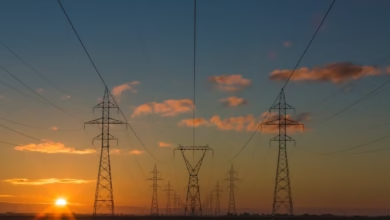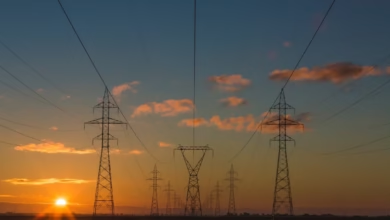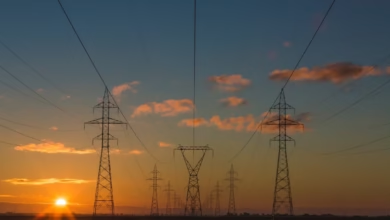Exploring Renewable Energy Sources: The Impact of Solar, Wind, Hydro, and Geothermal on the Energy Transition and Climate Change Mitigation

As the world grapples with the urgent need to combat climate change and transition away from fossil fuels, renewable energy sources such as solar, wind, hydro, and geothermal are emerging as vital players in the energy landscape. This shift towards green energy not only addresses environmental concerns but also enhances energy security and fosters economic growth. In recent years, innovations in energy storage and efficiency have become key drivers in making renewable energy more accessible and reliable, shaping the future of energy markets.
In this article, we will explore the rise of renewable energy and its critical role in the energy transition, examining how these sustainable sources are reshaping global energy trends. We will delve into the latest advancements in energy storage technologies and their impact on energy efficiency, as well as the broader implications for energy policy and investment. Additionally, we will discuss how renewable energy is integral to mitigating climate change, offering solutions to enhance energy security while promoting sustainable economic development. Join us as we navigate the dynamic world of renewable energy and its contributions to a greener, more sustainable future.
- 1. The Rise of Renewable Energy: Understanding Solar, Wind, Hydro, and Geothermal Sources in the Energy Transition
- 2. Innovations in Energy Storage and Efficiency: Key Drivers for Sustainable Energy Markets
- 3. Global Energy Trends: The Role of Renewable Energy in Climate Change Mitigation and Energy Security
1. The Rise of Renewable Energy: Understanding Solar, Wind, Hydro, and Geothermal Sources in the Energy Transition
The global energy landscape is undergoing a transformative shift as the world increasingly embraces renewable energy sources. This transition is propelled by the urgent need to combat climate change, reduce dependence on fossil fuels, and enhance energy security. Among the most prominent renewable energy sources are solar power, wind energy, hydropower, and geothermal energy, each contributing uniquely to the evolving energy markets.
Solar power has witnessed significant growth, driven by advancements in energy efficiency and decreasing costs of photovoltaic systems. This technology harnesses sunlight to generate electricity, making it a cornerstone of the energy transition. As countries invest in solar energy innovations, they are also exploring energy storage solutions to address the intermittency of solar generation, ensuring a reliable energy supply even during non-sunny periods.
Wind energy has emerged as another key player in the renewable energy sector. With the proliferation of both onshore and offshore energy projects, wind power capacity has surged globally. The expansion of smart grids facilitates the integration of wind energy into existing energy systems, enhancing grid stability and efficiency. Furthermore, as electric vehicles gain popularity, the synergy between wind energy and electric transportation becomes increasingly vital for reducing carbon emissions.
Hydropower, a more established renewable energy source, continues to play a critical role in energy markets. By utilizing the kinetic energy of flowing water, hydropower plants provide substantial thermal energy and stability to the grid. However, the environmental impact of large-scale hydropower projects necessitates careful energy policy considerations to balance ecological concerns with energy needs.
Geothermal energy, while less prevalent, offers a consistent and reliable energy source that can complement other renewables. By tapping into the Earth's internal heat, geothermal systems provide a steady supply of energy, contributing to energy security and diversification.
As global energy trends shift towards sustainability, energy investments in renewable technologies are on the rise. Governments and private sectors are prioritizing energy R&D to foster innovations that enhance energy efficiency and reduce carbon footprints. The integration of hydrogen energy, bioenergy, and carbon capture technologies into the renewable energy mix represents exciting opportunities for the future.
In conclusion, the rise of renewable energy sources such as solar, wind, hydro, and geothermal is a pivotal aspect of the energy transition. As nations navigate the complexities of energy imports and exports, the focus on energy innovations and sustainability will shape a resilient energy future that addresses climate change while ensuring economic viability.
2. Innovations in Energy Storage and Efficiency: Key Drivers for Sustainable Energy Markets
Innovations in energy storage and efficiency play a crucial role in shaping sustainable energy markets. As the world transitions from fossil fuels and nuclear energy to renewable energy sources like solar power, wind energy, and hydropower, the challenges of energy storage and efficiency become increasingly significant. Effective energy storage solutions are essential for managing the intermittent nature of renewable energy, ensuring that energy is available when it is needed most.
Recent advancements in battery technology, particularly lithium-ion and solid-state batteries, have drastically improved energy storage capabilities. These innovations enable the efficient storage of excess energy generated during peak production times, allowing for a more reliable energy supply. Additionally, hydrogen energy is emerging as a promising solution for long-term energy storage, providing a versatile option that can help balance supply and demand in energy markets.
Energy efficiency technologies contribute significantly to reducing overall energy consumption. Implementing smart grids enhances the management of energy distribution, optimizing energy transportation and reducing waste. These systems also support the integration of distributed energy resources, allowing for a more resilient and efficient energy infrastructure. Electric vehicles (EVs) are another area where energy efficiency innovations are making a notable impact, as they contribute to reducing emissions and improving energy security.
Furthermore, energy R&D is driving the development of carbon capture technologies, which can mitigate the environmental impacts of fossil fuels and support the transition to green energy. As energy policies evolve to prioritize sustainability and address climate change, investments in energy innovations become more critical. The global energy trends indicate a shift towards diversified energy portfolios, with an emphasis on renewable sources and energy efficiency measures.
As countries focus on energy exports and imports, innovations in energy storage and efficiency will be key drivers in establishing competitive energy markets. By fostering energy investments in renewable technologies, nations can enhance their energy security while also addressing the pressing challenges posed by climate change. The integration of thermal energy and bioenergy into the energy mix further illustrates the potential of a holistic approach to energy transition, ultimately leading to a more sustainable and economically viable energy future.
3. Global Energy Trends: The Role of Renewable Energy in Climate Change Mitigation and Energy Security
The global energy landscape is undergoing a significant transformation, driven by the urgent need to address climate change and enhance energy security. Renewable energy sources, such as solar power, wind energy, hydropower, and geothermal energy, are at the forefront of this transition, offering sustainable alternatives to fossil fuels and nuclear energy. The integration of these green energy technologies is not only crucial for reducing greenhouse gas emissions but also for establishing a resilient energy infrastructure.
As nations commit to ambitious climate targets, renewable energy plays a pivotal role in mitigating climate change. The shift from traditional energy sources to renewables is essential for reducing reliance on fossil fuels, which are the primary contributors to carbon emissions. Energy efficiency measures and innovations in energy storage technologies are enhancing the viability of renewable energy, making it a more attractive option in energy markets. Investments in energy R&D are further driving advancements in smart grids and distributed energy systems, optimizing the generation and distribution of energy.
Moreover, the increasing adoption of electric vehicles (EVs) underscores the importance of renewable energy in reducing carbon footprints. EVs, when powered by solar or wind energy, contribute significantly to lowering emissions from the transportation sector, which has historically been dependent on fossil fuels. The development of hydrogen energy and thermal energy solutions also offers promising pathways for diversifying energy sources and improving energy security.
In terms of energy policy, governments worldwide are implementing regulations and incentives that promote renewable energy investments. This shift not only enhances energy independence but also creates opportunities for energy exports, positioning countries as leaders in the global energy transition. The rise of offshore energy projects, particularly in wind energy, further exemplifies the potential for renewables to meet growing energy demands while ensuring environmental sustainability.
As global energy trends continue to evolve, the integration of renewable energy into the energy mix will remain a cornerstone of strategies aimed at combating climate change and securing energy supplies. By embracing innovations in energy transportation and carbon capture technologies, the path toward a sustainable energy future becomes increasingly feasible, paving the way for a more resilient and environmentally-friendly energy economy.
In conclusion, the transition to renewable energy sources such as solar, wind, hydro, and geothermal is not just a trend but a necessary evolution in our global energy landscape. As we strive for energy security and sustainability in the face of climate change, the importance of diversifying our energy portfolio cannot be overstated. Innovations in energy storage and efficiency are pivotal, enabling us to harness the full potential of green energy solutions while reducing reliance on fossil fuels and nuclear energy.
The ongoing global energy trends indicate a significant shift toward renewable energy investments, emphasizing the need for robust energy policies that support the growth of sustainable energy markets. With advancements in energy R&D, including smart grids and energy transportation technologies, we are better equipped to manage our energy consumption and enhance energy efficiency.
As we embrace the energy transition, it is crucial to recognize the interconnectedness of various energy sources, including hydropower and bioenergy, and their roles in shaping the future of energy economics. By fostering an environment conducive to offshore energy development and the utilization of thermal and hydrogen energy, we can further mitigate carbon emissions and promote energy exports while securing a sustainable future for generations to come.
As we move forward, let us continue to advocate for innovative solutions that not only address our current energy challenges but also pave the way for a cleaner, greener, and more resilient energy system. The path to a sustainable energy future is not only possible but imperative, and it begins with our commitment to renewable energy.





